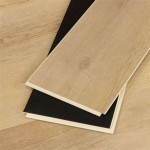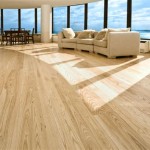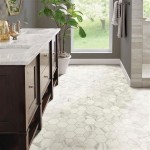Having natural hardwood floors in your home can add a sense of timeless elegance and warmth to your home. But if you’re considering installing natural hardwood floors, there are a few things you should know first. Here is a comprehensive guide to natural hardwood floors so you can make an informed decision about whether this type of flooring is right for you.
Advantages of Natural Hardwood Floors
One of the primary advantages of natural hardwood floors is their timeless look. They never seem to go out of style, and can last for decades with proper care. Natural hardwood floors are also durable and can stand up to plenty of wear and tear. This makes them a popular choice for busy households with kids and pets.
Another great advantage of natural hardwood floors is their versatility. They can be stained in almost any color and are available in a wide range of textures and finishes. Whether you prefer a sleek, modern look or a more traditional, rustic style, natural hardwood floors can be tailored to fit your home’s design.
Disadvantages of Natural Hardwood Floors
The main disadvantage of natural hardwood floors is their cost. Natural hardwood floors tend to be more expensive than other types of flooring, such as laminate or vinyl. The exact cost will depend on the type of wood, the size of the floor, and the finish. If you’re on a tight budget, natural hardwood floors may not be the best choice.
Another disadvantage of natural hardwood floors is their susceptibility to moisture. They can be damaged by excessive moisture, so it’s important to keep them dry and prevent water from seeping into the wood. Natural hardwood floors also require regular maintenance, such as sweeping, mopping, and refinishing. And if you live in an area with large temperature swings, the wood may expand and contract, leading to cracks or gaps.
Types of Natural Hardwood Floors
When it comes to natural hardwood floors, there are several different types to choose from. Some of the most popular types include:
- Oak: Oak is a popular choice for natural hardwood floors due to its durability and resistance to wear and tear. It also has a pleasing grain pattern and a warm, natural color.
- Maple: Maple is another popular choice for natural hardwood floors. It’s known for its light, creamy color and smooth grain pattern.
- Walnut: Walnut is a darker-colored wood that has a distinctive grain pattern. It’s often used for a more formal look.
- Cherry: Cherry has a rich, red color and a unique grain pattern. It’s often used in more traditional-style homes.
- Pine: Pine is a light-colored wood that has a rustic, natural look. It’s often used in more casual-style homes.
Installation of Natural Hardwood Floors
Installing natural hardwood floors can be a challenging task, so it’s best to hire a professional. The installation process will vary depending on the type of wood and the size of the floor. But generally, the process involves laying down a subfloor, sanding the wood, staining and sealing it, and then installing the individual planks.
The installation process can take several days, and it’s important to make sure it’s done correctly to ensure the floors last for many years. Hiring a professional installer will ensure the job is done right and that your floors are properly sealed and protected.
Care and Maintenance of Natural Hardwood Floors
When it comes to caring for natural hardwood floors, it’s important to protect them from damage. Avoid walking on them with high heels or dragging furniture across them. Use rugs and mats to protect the floors from dirt and moisture. And vacuum or sweep them regularly to remove dirt and dust.
It’s also important to refinish your natural hardwood floors every few years to maintain their luster. Refinishing involves sanding the floors to remove scratches and scuff marks, and then applying a protective sealant. This will help protect the wood from moisture and further damage, and will keep your floors looking like new for years to come.
Conclusion
Natural hardwood floors can add a timeless beauty and elegance to any home. But before you decide to install them, it’s important to consider the cost, the installation process, and the maintenance requirements. If you do decide to install natural hardwood floors, be sure to hire a professional installer and take proper care of your floors to ensure they last for many years.















Related Posts








